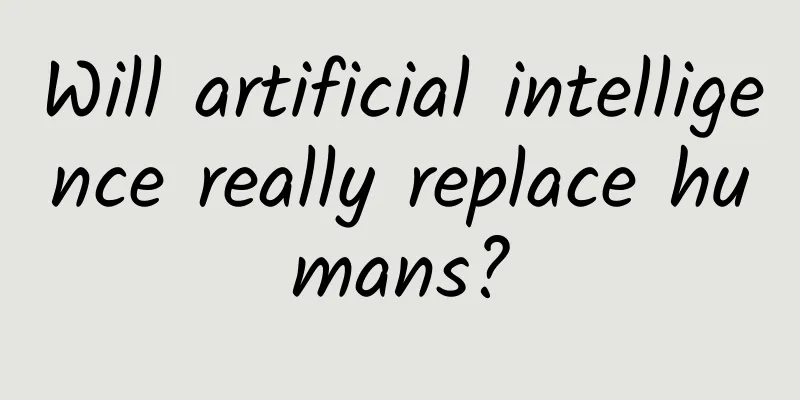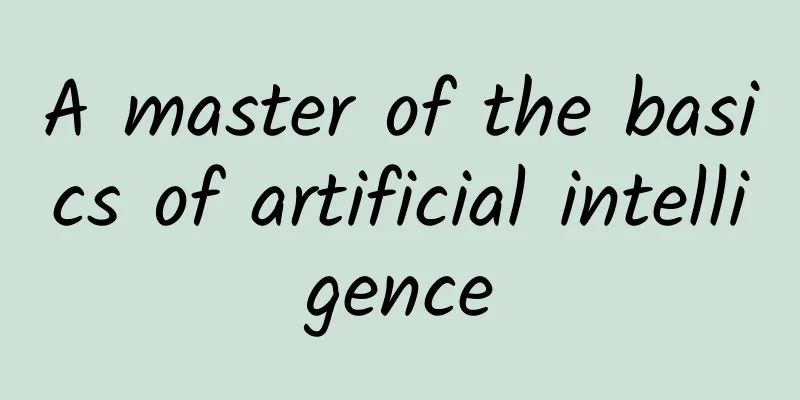Will artificial intelligence really replace humans?

|
"With AI, we will summon the devil. In all the stories, the guy with the pentagram and holy water is convinced that he can control the devil, but in fact he can't." Musk's words have added a lot of controversy to the artificial intelligence that has attracted much attention in the industry recently. Not only that, even the scientific master Hawking has some complaints about this. Why do leading figures in the technology and scientific community frequently issue the threat theory of artificial intelligence? Will artificial intelligence really lead to machine civilization and eventually replace humans as some people imagine? As a branch of computer science, artificial intelligence is not mysterious. Its application in modern science and technology has long been prevalent in people's daily lives. Anyone with a little common sense can conclude that the theory of artificial intelligence threat is untenable by simply reading the history of computer science development and making rational analysis. First, let's understand the essence of artificial intelligence. From the definition of the term Artificial Intelligence, the essence of AI is a kind of intelligence, and this intelligence is artificially created, rather than evolved through natural evolution like living organisms. We know that the human brain is the result of natural selection, and the intelligence of AI comes from circuit logic based on binary principles. Although their origins are different, what are the similarities and differences in their functions and performances? Dr. Roger Sperry, who won the Nobel Prize in Physiology in 1981, once published the famous "Left and Right Brain Division of Labor Theory", which confirmed the asymmetry of the brain through brain split experiments. That is to say, the left and right hemispheres of the human brain have different divisions of labor. The left hemisphere is good at rational abstract thinking such as analysis, logic, deduction, and reasoning; the right hemisphere is good at emotional image thinking such as intuition, emotion, art, and inspiration. So does artificial intelligence also have all the functions of the left and right hemispheres of the human brain? We can get the answer from the principles of computer language and the history of the development of artificial intelligence: so far, all the intelligent manifestations of AI are only imitating the rational thinking mode of the human left brain, and do not have the emotional thinking of the right brain at all, and this will also be the case in the future. As we all know, computer language has gone through machine language, assembly language and high-level language in its historical development. We call the lowest and most primitive computer language machine language. Machine language is a set of instructions that can be directly recognized by computers, which is represented by binary code. It reflects the principle of computer "thinking" and the principle of artificial intelligence. The two numbers 0 and 1 can constitute all the logic of the world, but they cannot create inspiration, have intuition, or gain emotions. Have you ever seen a machine with "emotions"? Perhaps some people would say that Microsoft Xiaobing and Cortana are very spiritual, can express emotions, and have quite in-depth and leapfrog communication and interaction with users. It does seem so. At this stage, the development of artificial intelligence science has entered a relatively fast rising period. Perhaps in the future there will be better AI that will make you unable to tell whether you are talking to a person or a machine. But please note that these people have overlooked one point. Although the behavior of AI is getting closer and closer to humans, its essence has not changed, that is, it is to use 0 and 1 to imitate the rational thinking of the human left brain. The Internet has greatly helped the development of artificial intelligence. When people began to use big data to enrich the anthropomorphic expression of AI, the boundary between humans and machines seemed to become increasingly blurred, which reminded people of the famous Turing test. But when artificial intelligence expresses human emotions and behaviors, it is copying and imitating, not imagining and creating. The objective data on the Internet and the subjective imagination of human beings are two different things. Speaking of imitation, we find that machines not only imitate human thinking, but also human physiological behavior. For example, various sensors are equivalent to the extension of human senses. Machines can imitate human vision, hearing, smell, and taste functions, record the things they "feel" as abstract data, conduct high-speed "rational thinking", and generate "consciousness" (obtain calculation results). Thinking of this, some people may feel scared: machines have some of the abilities of humans, and even do better than humans. Will they one day replace humans themselves and even pose a threat to us? As early as 2,200 years ago, Xunzi had given the answer to this question: Those who use carriages and horses are not good at running, but they can travel a thousand miles; those who use boats and oars are not good at swimming, but they can cross rivers. A gentleman is not born different, but he is good at using things. Technology will always be a tool for humans, the Internet is, and so is artificial intelligence. It is natural for humans to use tools to transform the world and make life better. At the same time, powerful tools are double-edged swords. As long as they are not used to hurt humans themselves, why not use them? Artificial intelligence is an objective, logical, and rational intelligence. It cannot produce subjective initiative, and the initiative is always in the hands of humans. And humans will not be stupid enough to input instructions like "please eliminate humans" to machines. In a word: no zuo no die. Finally, our conclusion is that artificial intelligence will replace some human labor, but it cannot replace all human activities, let alone rule over humans. If von Neumann were alive, he would agree with this conclusion. As a winner of Toutiao's Qingyun Plan and Baijiahao's Bai+ Plan, the 2019 Baidu Digital Author of the Year, the Baijiahao's Most Popular Author in the Technology Field, the 2019 Sogou Technology and Culture Author, and the 2021 Baijiahao Quarterly Influential Creator, he has won many awards, including the 2013 Sohu Best Industry Media Person, the 2015 China New Media Entrepreneurship Competition Beijing Third Place, the 2015 Guangmang Experience Award, the 2015 China New Media Entrepreneurship Competition Finals Third Place, and the 2018 Baidu Dynamic Annual Powerful Celebrity. |
<<: Five bosses changed in six years: What is Shanda Games trying to do?
>>: There is no legal basis for prohibiting taxi apps from displaying destinations
Recommend
A "Spider Seal" was discovered in Qingcheng Mountain. Its exquisite pattern resembles a copper coin. Could it have evolved naturally?
The Richter's disc-bellied spider has a very ...
The secret of down jackets to keep warm can no longer be hidden
Produced by: Science Popularization China Produce...
Sony ridicules PSVR: How to resolve the contradictions in the early stages of virtual reality development?
If Samsung had told everyone in advance that the ...
NetEase, don’t drift away
NetEase published a statement on its portal websi...
What are the requirements for tomb sweeping during Qingming Festival in 2022? What date does it usually start and end?
Tomb sweeping on Qingming Festival is a kind of to...
Don’t just think about eating, be alert to intestinal infectious diseases in summer!
Recently, the temperature in Beijing has reached ...
True high-quality watering: When irrigation meets high-tech
In order to ensure the country's food securit...
6 suggestions to create an operational promotion plan that can be implemented!
Whether you are a novice in website operation or ...
Ruan Yifeng: Why is the memory address of the master boot record 0x7C00?
The "Computer Principles" textbook says...
How to choose the most effective promotion channel for APP?
After the APP is launched, promoting the product ...
A sideline business with zero threshold to make money, with a monthly income of 20,000+ for beginners
At present, everyone knows that the short video i...
Jiayuguan WeChat ordering software mini program, how much does the WeChat mini program for ordering food cost?
Everyone is familiar with WeChat mini-programs . ...
Miguella Gösler's Gestalt Therapy Series 14 episodes (Chinese translation)
Miguella Goucheri's Gestalt Therapy Series 14...
DNA map unlocks new insights into brain development: Mental illness may originate in the fetal period
Tuchong Creative The human brain is one of the mo...









